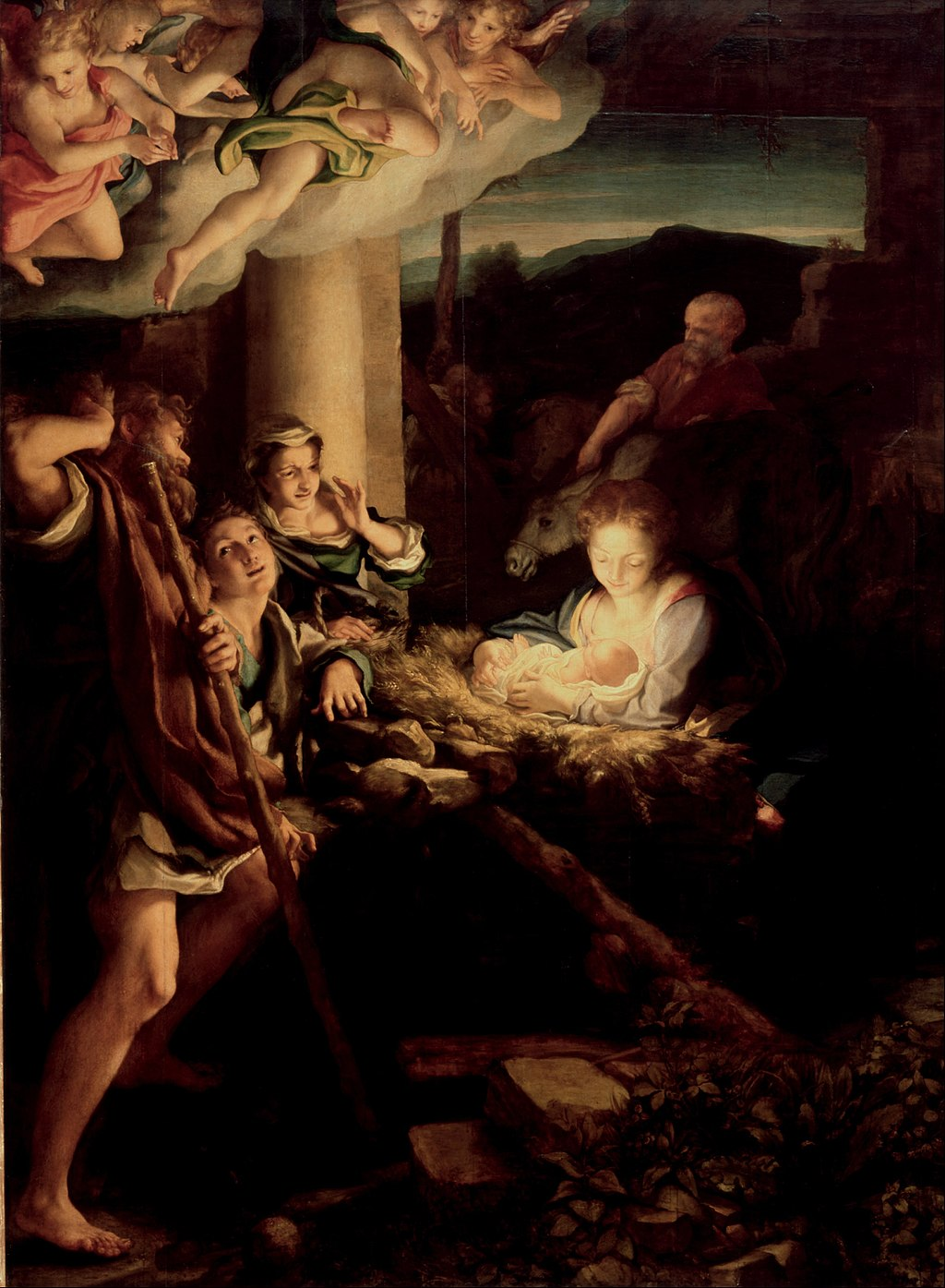

The Nativity, also known as Adoration of the Shepherds, was commissioned in 1522 for a family chapel in Reggio Emilia in northern Italy. It has been described as the first monumental nocturnal scene in European art, and perhaps the most famous canvas by Correggio
In the painting, the Infant, lying on a rough bed of wheat, is the main source of light for the composition. The cone of luminosity shines upon Mary, the group of shepherds on the left, as well as the angels floating above in fluid gestures. On the right behind Mary is Saint Joseph who is holding back a donkey, and other animals typically featured in the manger scene
This work is one of the first Western masterpieces to depict a scene as if illuminated only by candles. Painters from all over Europe went to Reggio Emilia to admire the painting, including Velázquez, who wanted to buy it for the King of Spain, and Peter Paul Rubens, who drew inspiration for his own Adoration of the Shepherds painted in 1607
Story has it that this painting was carried off at night by Francesco I d'Este, Duke of Modena, in 1640, who had it secretly replaced by a copy. It was sold in 1745-6, along with several other works by Correggio, to Augustus III, King of Poland and Elector of Saxony, and as a result is today part of the Gemäldegalerie collection in Dresden